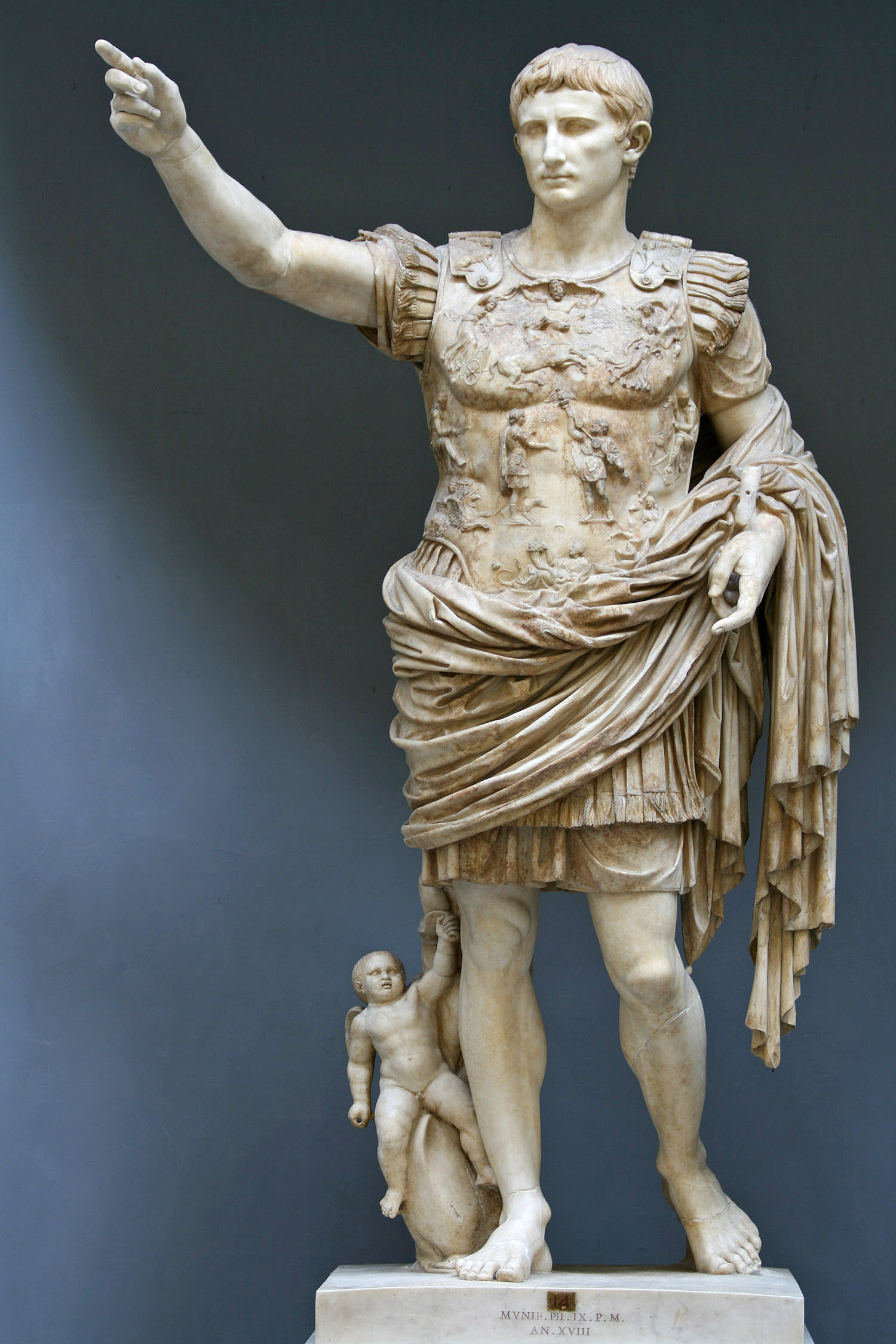 |
| Augustus rocking a highly decorated muscle cuirass- no man boobs in sight! |
There's been a kerfuffle over the last few days over whether or not the showing of certain body parts on a certain social media image sharing app is appropriate. Sparked by a pop star closing her account after topless images she'd posted were removed, Instagram's founders have been robust in their responses- they are not going to show (female) nipples, and that's that. Cue growls and grumbles (I don't think it's big enough to be outrage) on one side about the censorship of the female body- running along the lines that male topless images are fine, and sexualised images not showing nipples are fine- but an "empowering" self-portrait is not? Other observers have smugly agreed with Instagram, employing the good old "won't somebody think of the children" strategy, arguing that the internet is too sexualised as it is, and that younger users should not be exposed to nipples, among other things.
This argument popped up at a time when
I've been thinking a lot about the power of images, particularly images of
human bodies. While that's a theme I've worked on for a long time, it still
absolutely fascinates me how we access, control, shape and distribute images of
bodies, and what we use those images for. They can be admired, idealised,
fantastic visions to one person, and degrading, humiliating filth to another-
with hundreds of different viewpoints on the same image between those two
extremes. Nudity in particular has been a cause of trouble for millennia- when
is it acceptable to show a naked male or female body, and what are the socially
appropriate responses to that image?
Rome forms a fascinating case study for
these issues, and (in developing a new research project), it's a period I've
been thinking about more and more. Public nudity amongst members of the same
sex, within the curatorial context of bathing, was more or less acceptable
(there is some concern about the exposure of mature male bodies to young men),
but the display of images of the naked body during the Republican period
remained a social taboo. Yet as Rome became increasingly influenced by Greece,
where athletic, heroic nudity was a central part of representative practice, a
problem arose that mirrors the current Instagram issue, although the issue was
not sexualisation per se,
but rather a lack of dignity in the naked person. The question remains the
same, however- which is more important, public morality or fashion?
Steadily, high profile Roman images of the
body began to adopt the nudity of Greek style- coyly, by the use of the muscle
cuirass, a moulded piece of armour designed to give the impression of nude
perfection while keeping the underlying body hidden (handy for man boobs) or
more boldly, with nude or partially nude statues produced and purchased by the
elite. Women's nudity, however, caused more problems. While across pre-Roman
Italy, images of nursing mothers had been entirely acceptable, and Greek
inspired visions of a nude Venus were happily adopted, the two traditions could
not merge into one coherent representative style- Greek taboos on the depiction
of breast feeding were too strong, as Larissa Bonfante notes. As a result,
while images of bare-breasted idealised motherhood remained popular, as on the
Ara Pacis monument, representations of suckling fell out of favour in
officially sanctioned contexts. That’s reminiscent of another social media row
over representation- whether breastfeeding breaks Facebook’s rules on the
sharing of appropriate images.
This has been a speedy, oversimplified post, skimming over a lot
of far more complicated issues past and present. But the Instagram nipple spat
brings up deeper questions about the way we show our bodies to the world- what
is and isn’t acceptable to arbiters of social morality and to each other, and
how those standards are not set, but fluid and continuously changing. Looking
at the change in representation of the nude Roman body, I can’t help but wonder
if we’ll be looking back and asking what all the fuss was about over a topless
selfie.
No comments:
Post a Comment
What do you think? I'd love to hear what's in your head.